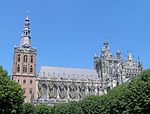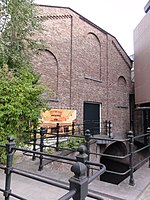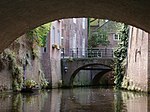Museum Slager
Art museums and galleries in the NetherlandsMuseums in 's-HertogenboschMuseums in the Netherlands

Museum Slager is an art museum in 's-Hertogenbosch, Netherlands, dedicated to the work of eight local painters from three generations of the Slager family. Behind the distinguished façade of the building there is a collection of paintings, drawings, engravings, watercolours and objects, all directly related to this family of painters. The museum is located at 8 Choorstraat, not far from St. John's Cathedral.
Excerpt from the Wikipedia article Museum Slager (License: CC BY-SA 3.0, Authors, Images).Museum Slager
Choorstraat, 's-Hertogenbosch
Geographical coordinates (GPS) Address Nearby Places Show on map
Geographical coordinates (GPS)
| Latitude | Longitude |
|---|---|
| N 51.6877 ° | E 5.31 ° |
Address
Choorstraat 14
5211 KZ 's-Hertogenbosch
North Brabant, Netherlands
Open on Google Maps










